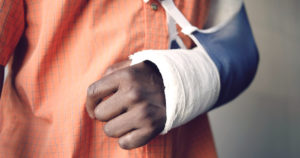Backseat Passenger Injuries
February 17, 2020 A recent study conducted by the Insurance Institute for Highway Safety (IIHS) suggests that passengers may want to choose the front seat of a car when traveling. The study revealed that backseat passengers are injured more often and more severely than those traveling in the front seat. Safety for front seat passengers has improved tremendously over the past decade due to advancements in automated safety features. Improved airbags and deployment systems, as well seat belts that automatically tighten when sensors detect an impending crash, are just a few of the safety innovations that have significantly reduced the number and severity of injuries and fatalities for front seat passengers.
A recent study conducted by the Insurance Institute for Highway Safety (IIHS) suggests that passengers may want to choose the front seat of a car when traveling. The study revealed that backseat passengers are injured more often and more severely than those traveling in the front seat. Safety for front seat passengers has improved tremendously over the past decade due to advancements in automated safety features. Improved airbags and deployment systems, as well seat belts that automatically tighten when sensors detect an impending crash, are just a few of the safety innovations that have significantly reduced the number and severity of injuries and fatalities for front seat passengers.
Common Types of Injuries for Backseat Passengers
The most common types of injuries suffered by backseat passengers include:
- Chest Injuries: Chest injuries are the most common and serious of all backseat passenger injuries. While many cars now have side airbags in the backseat, many chest injuries occur when passengers are thrust forward in a collision. The impact of hitting the interior of the car compounded with the force of the seat belt that lacks automated tension sensors leave victims prone to severe chest injuries. Cracked ribs, internal organ damage, and punctures of the heart and lungs can have catastrophic results.
- Head Injuries: Traumatic Brain Injury (TBI), skull fractures, concussions, memory loss, and bleeding in the brain often result when a backseat passenger hits their head in a collision. The force on and within the skull can cause permanent brain damage. Cognitive impairment can leave a victim unable to work or live independently.
- Neck and Spinal Injuries: The lack of backseat airbags and automated seat belts leave backseat car accident victims prone to neck and spinal injuries. The force of the crash and the lack of restraint offered with a non-automated seat belt can result in the snapping of vertebrate and disks in the neck and spinal region. Paralysis and cognitive impairment are common consequences of this type of injury.
- Severe Cuts, Lacerations, and Bruising: Backseat passengers are often thrust against the interior of the vehicle during a car accident. Shattered windows and sharp metal can penetrate the skin with such a force that they cause serious cuts and lacerations with excessive bleeding. This type of injury has been significantly reduced for front seat passengers with improved restraint systems.
What Can We Expect in the Future?
Car manufacturers and safety advocates are in the process of designing and implementing improved safety features in the backseats of new cars. Automated seat belts with crash sensors, forward-facing airbags, and inflatable seat belts that reduce the force on the chest area during a crash are all on the horizon.
Crash tests are being conducted to identify the likelihood and severity of injuries on backseat passengers that will lead to innovations in safety features. Automotive engineers and car manufacturers are more aware of the discrepancies between front seat and backseat passenger safety, which has forged a new commitment to improve the safety of those traveling in the backseat of a car.
Philadelphia Personal Injury Lawyers at Galfand Berger LLP Advocate for Backseat Passenger Safety
If you were injured in a car accident, call the Philadelphia personal injury lawyers at Galfand Berger LLP. Call us today at 800-222-8792 or contact us online to schedule a free consultation today. Located in Philadelphia, Bethlehem, Lancaster, and Reading, Pennsylvania, we serve clients throughout Pennsylvania and New Jersey, including Allentown and Harrisburg.
 Google Screened
Google Screened
